Visit Library for MBP Pro eBooks |
Following on from part one of this series, today we pick up the trail on my recent Complete Namibia Tour as we head back into Kolmanskop for a second afternoon of shooting. The first photo that I want to share is of a favorite room of mine, with a couple of indoor sand dunes, and there are gaps between the roof slats that allow light to pour into the room at a certain time of day, making for striking light and shadow patterns.

Although, as I mentioned last week, I don’t worry about windows getting overexposed here, I am careful to ensure that I don’t overexpose the bright areas of the wall where the light is shining through the slats in the roof. I set a small aperture of ƒ/14 to get lots of depth of field, and then because I was using a tripod and nothing in the scene was moving, I set my ISO to 100. Then all that remains is for me to set my shutter speed to the setting that gives me a good exposure, with the bright areas of the image on the right side of the histogram. In this case, that was 1/30 of a second.
The following image of another house shows multiple doors with rooms full of sand. The room in the foreground’s floor has given way on the left side, so the accumulated sand has slipped away to the left. I prefer natural patterns from the wind in the sand to footprints, but in some rooms, this is inevitable. To give you an idea of the available light here, at the same aperture and ISO as the previous image, this one required a shutter speed of 1.6 seconds to record the image as you see it.
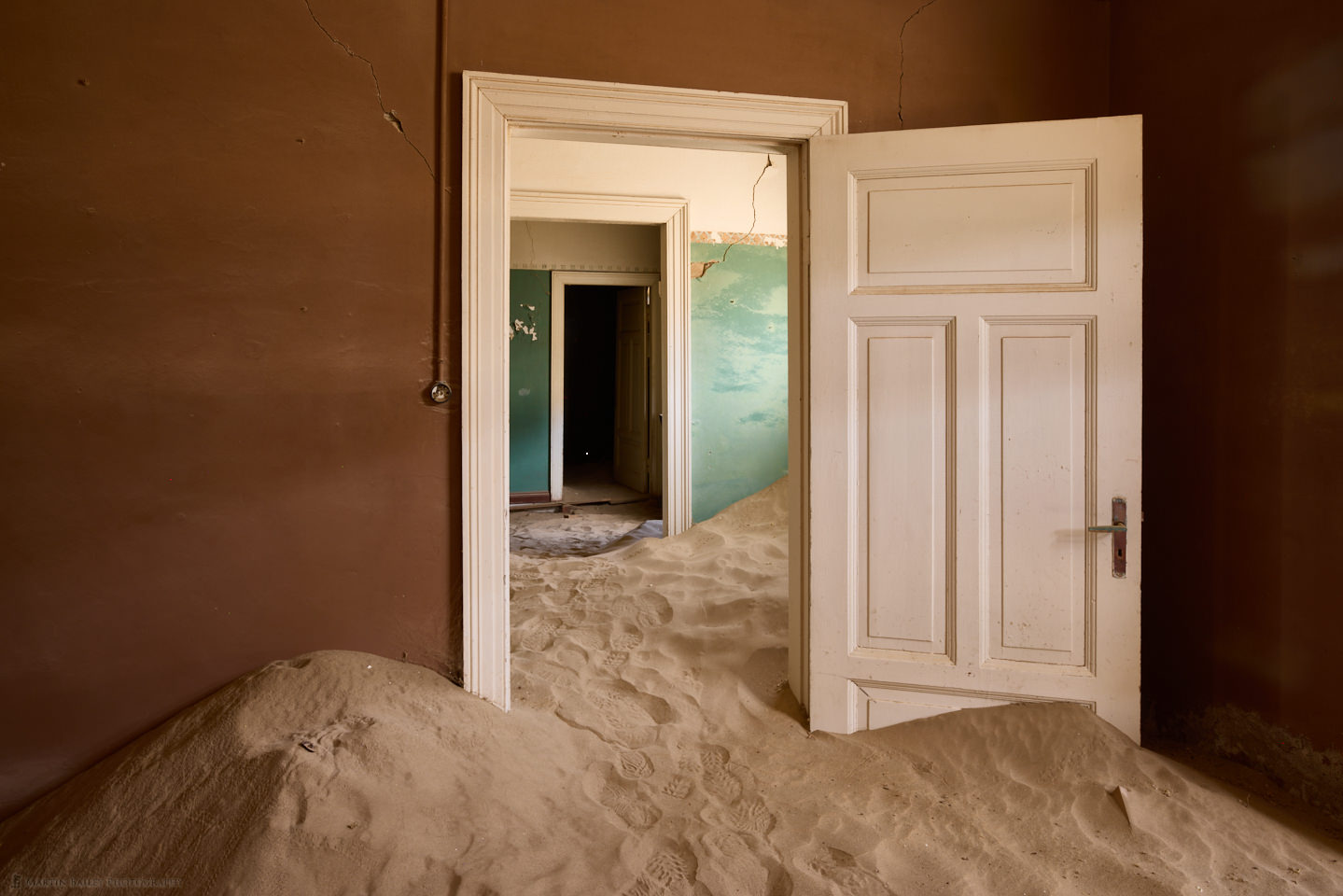
A similar composition here with a different room with blue walls, but the sand is much higher in the room than in the previous image. I think I prefer these blues over the brown walls, and I like how the terracotta-colored wall in the second room in this shot is almost a complementary color to the blue.
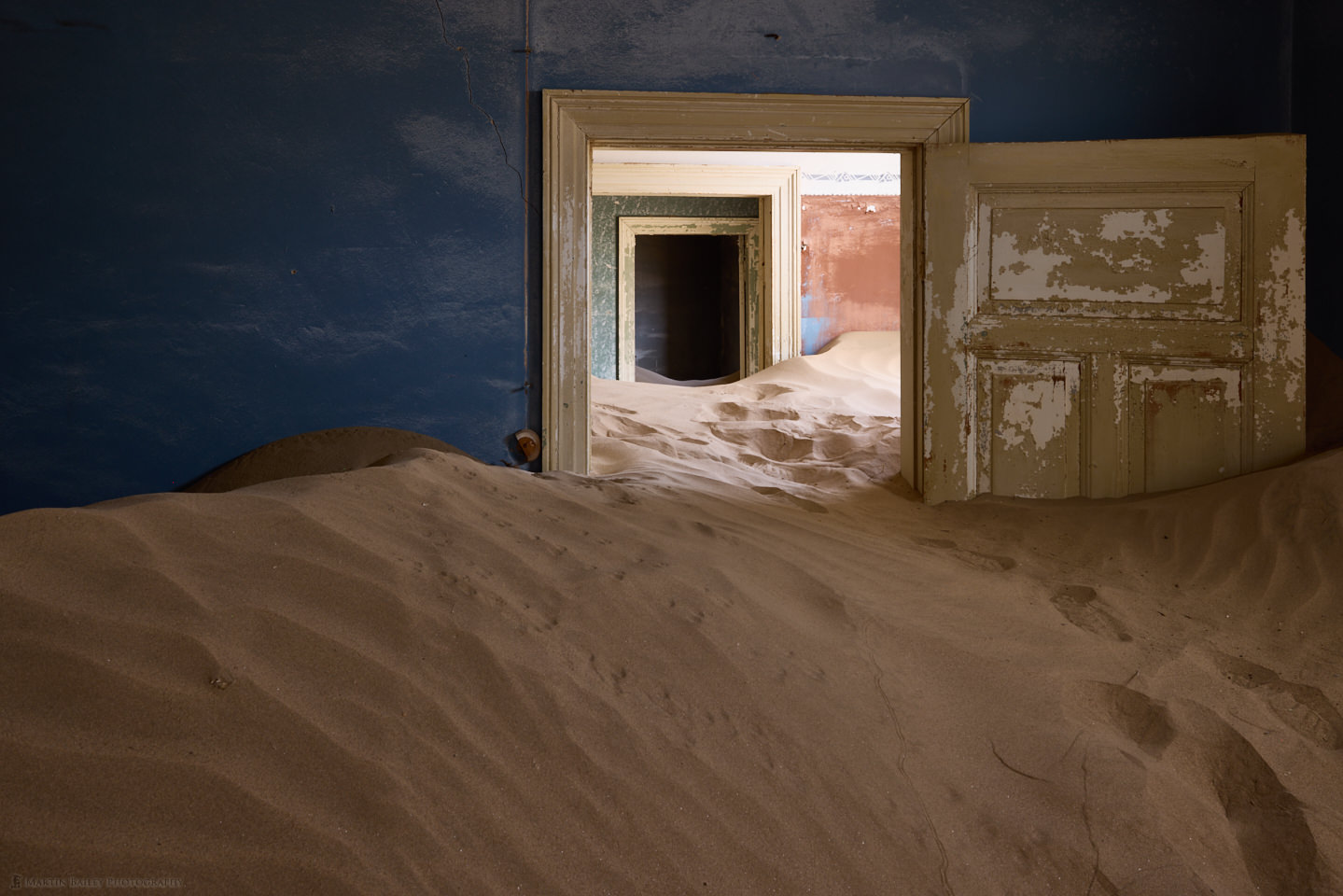
This next shot is the final image I will share from Kolmanskop for this trip, and it’s one that I’ve shared before, but I love this tiny little blue room that I have to shoot through a broken panel in the door, as the door itself is now completely buried in the sand and impossible to move.
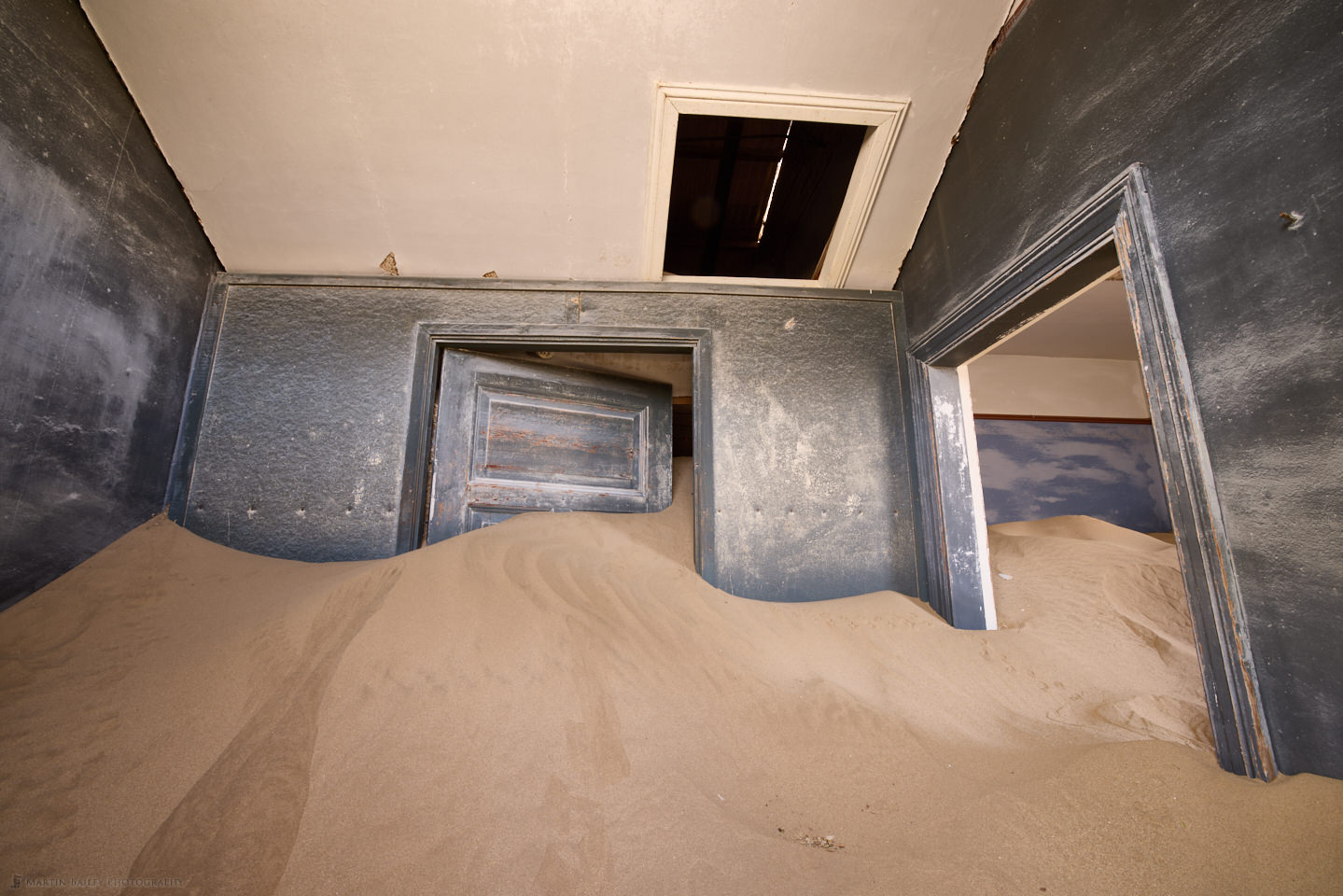
We drove from Luderitz to Sossusvlei in the Naukluft National Park the following day, where we would spend the following three nights. During the drive, we started to see wildlife, and although we didn’t have a lot of time to stop, we couldn’t resist trying our hands with the beautiful Greater Kestrel that we saw on fence posts several times.
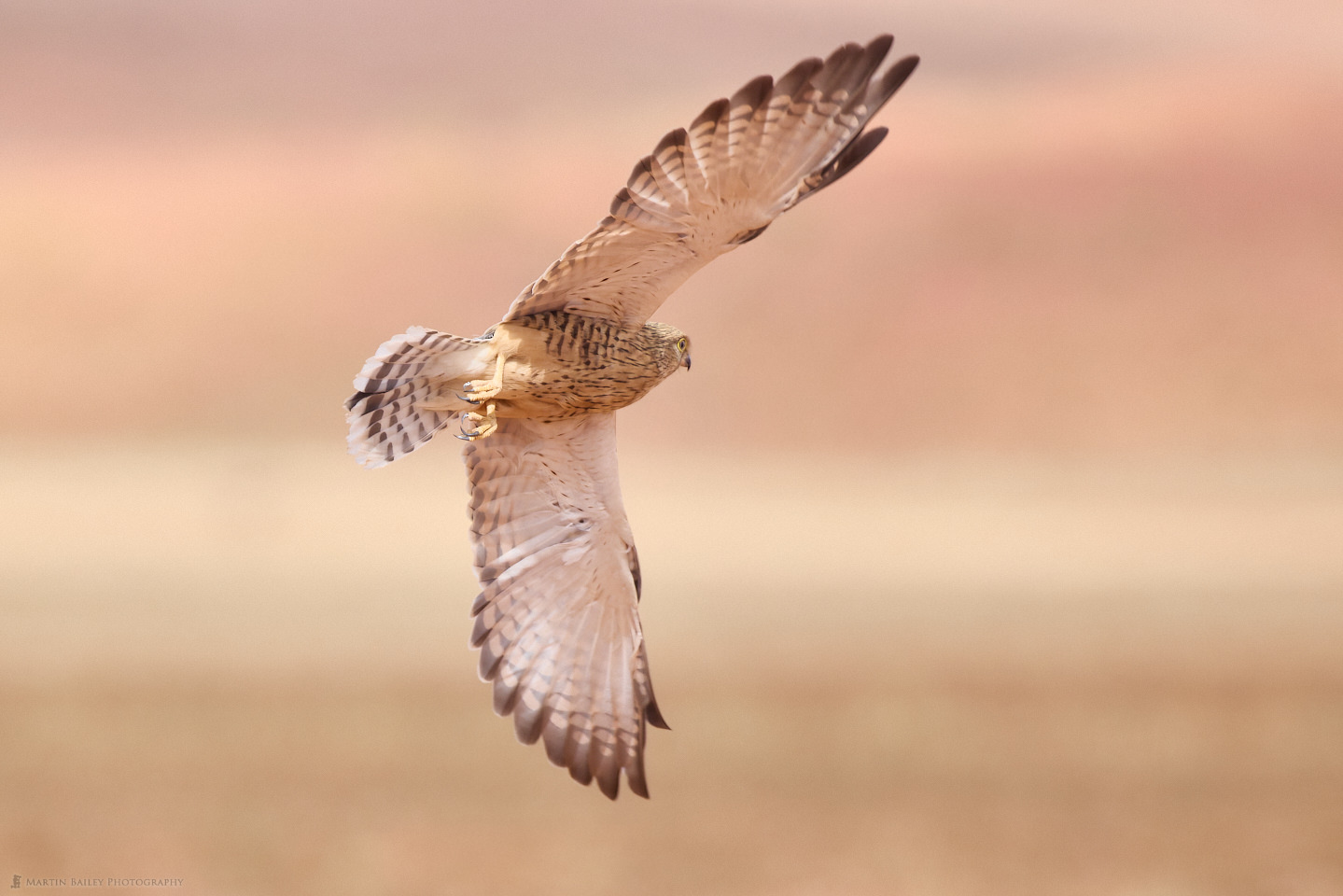
We’d often switch between slow-paced landscape photography and fast-paced wildlife work for the next few days. For this image, I used a shutter speed of 1/3200 of a second to ensure that I froze the bird in the air, and my aperture was down at ƒ/10 because I was using a 1.4X extender on my Canon RF 100-500mm lens, although I generally stop down to around ƒ/10 for a single animal anyway. After all, I want to ensure that I get enough of the animal sharp. Many people that shoot wildlife shoot with the aperture wide open so that they can keep the shutter speed high and ISO low, but in my opinion, that generally doesn’t give you enough depth of field to do the subject justice. Also, when there are two or more animals in the scene, I generally stop down to around ƒ/14 for even greater Depth of Field.
The following morning, for the first time since I’ve been traveling to Namibia, we could not photograph the dead camel-thorn trees in Deadvlei because there were clouds in the sky, so there was not enough contrast between the backlit dune and the foreground trees. Deadvlei was also quite crowded on our first visit, although we’d have been able to work around that. On our way back, though, the sun came out and gave us some nice shadows, highlighting the texture on the shade side and the beautiful curves of the dune known as Big Mamma, as you can see in the following photograph.
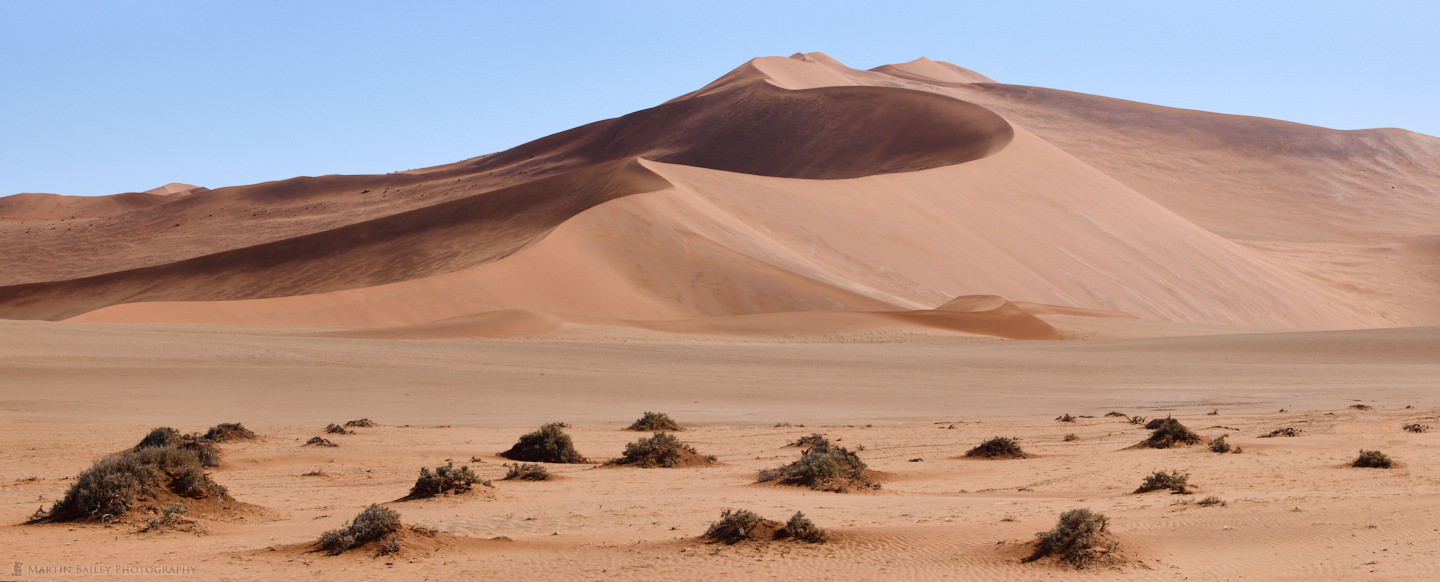
This is a stitch of around five photos to make this panorama, so the resulting image is around 150 megapixels. I could and probably will print this big when I get a little time. During the day the animals are not active, and the group is generally happy for some time to relax, so we took a few hours off, then went back out in the late afternoon to photograph one of the dunes. I love to photograph them as the sun is just about to go below the horizon as that makes the deepest shadows on the left side of the dune and some great contrast as you see here.
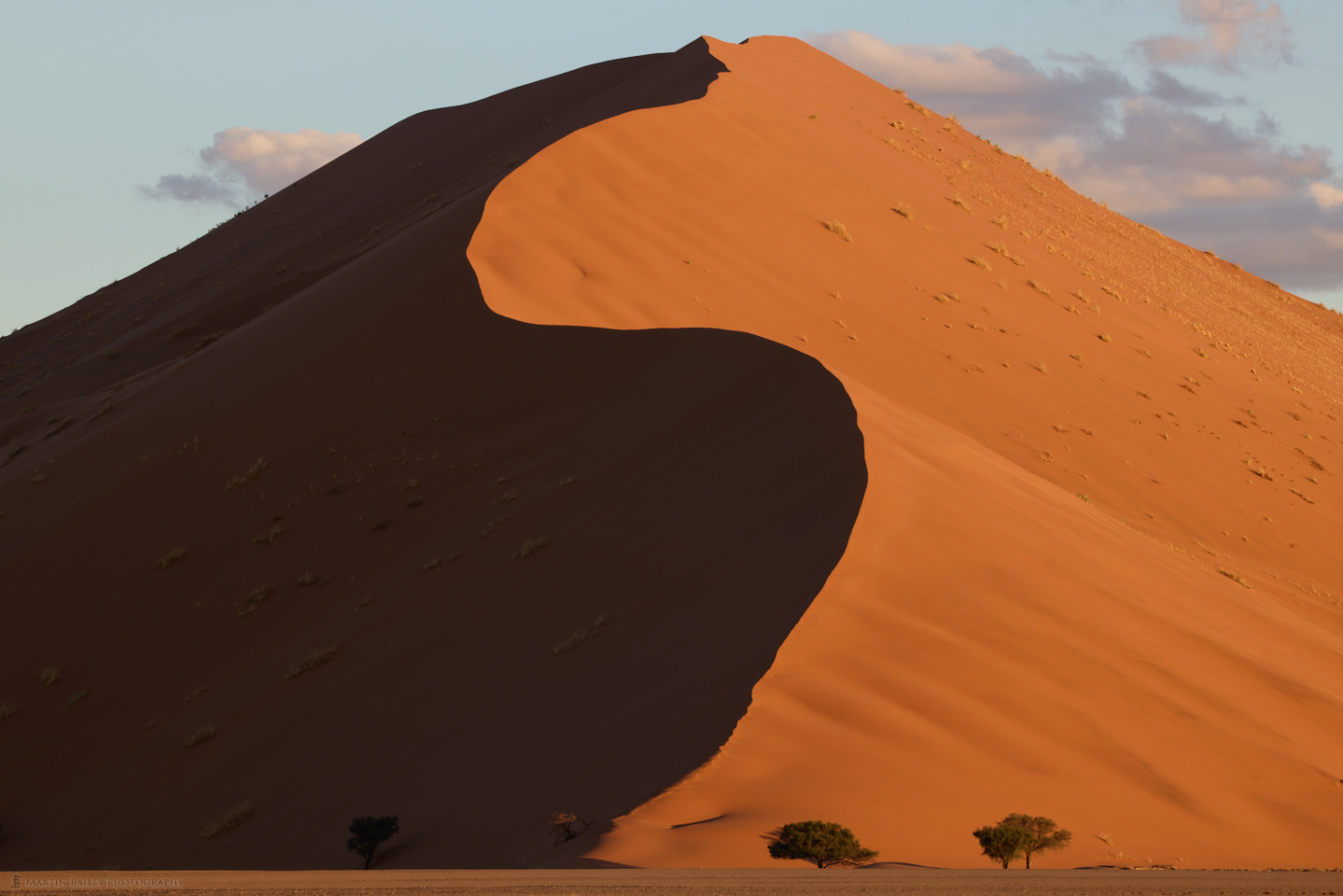
The following morning we got the silhouettes in Deadvlei, and it was less crowded too, so it was a very peaceful shoot. This is the second image I shot this morning, as I’ve shared images of the first scene I selected way too many times already. What you are looking at here is the shadow of a dune named Big Daddy behind us. The sun is hitting just the sand on the dune at the far side of the valley and not yet hitting the white clay pan or the trees in the foreground, so the contrast makes for striking silhouettes of the trees, which have been dead now for 800 years.
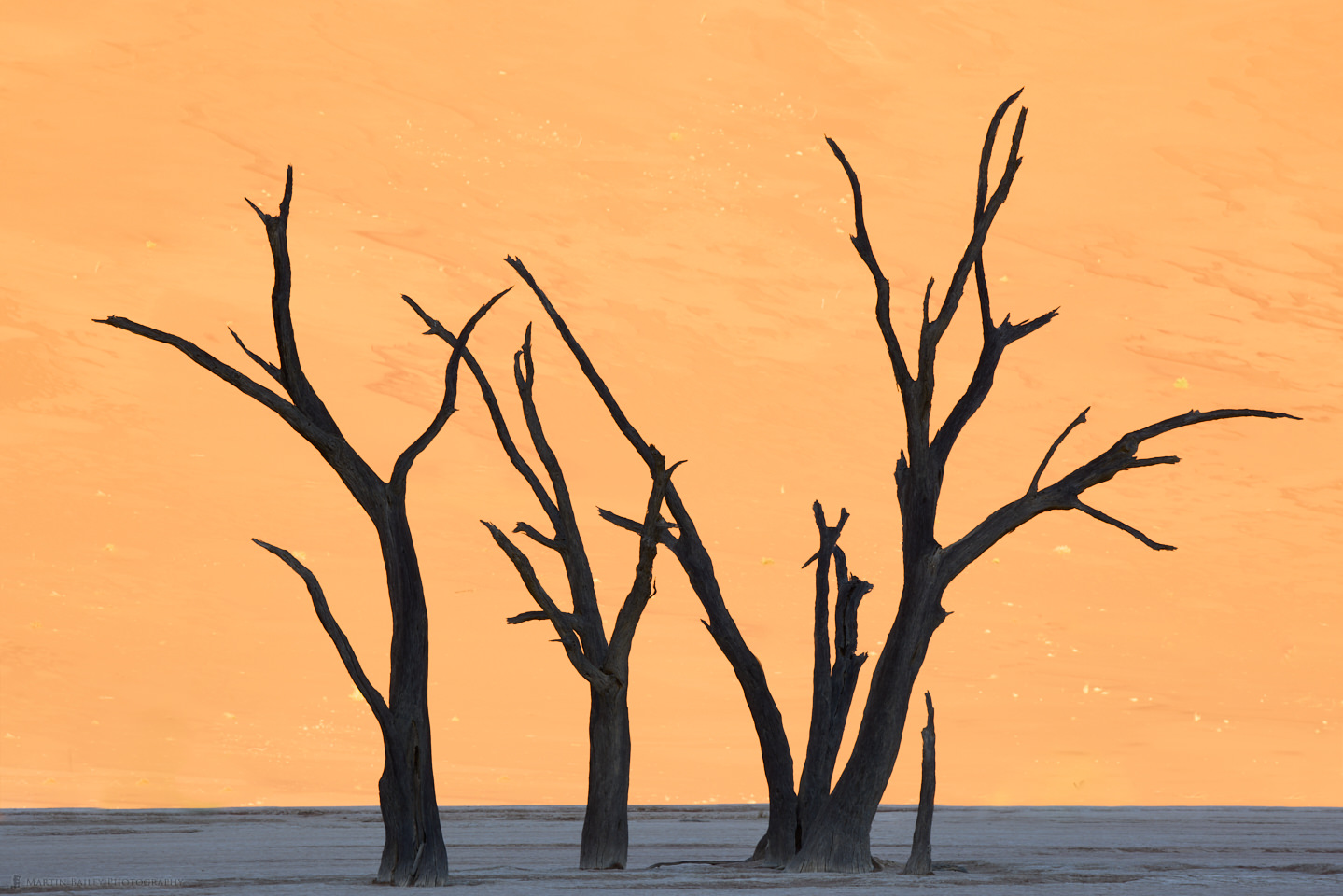
Here is my third shot of the morning, with just a lone tree, which I also find quite pleasing. I’ve cleaned up a lot of clumps of greenery from the dune wall behind the trees in these shots, but otherwise, the contrast you see here is pretty much natural.
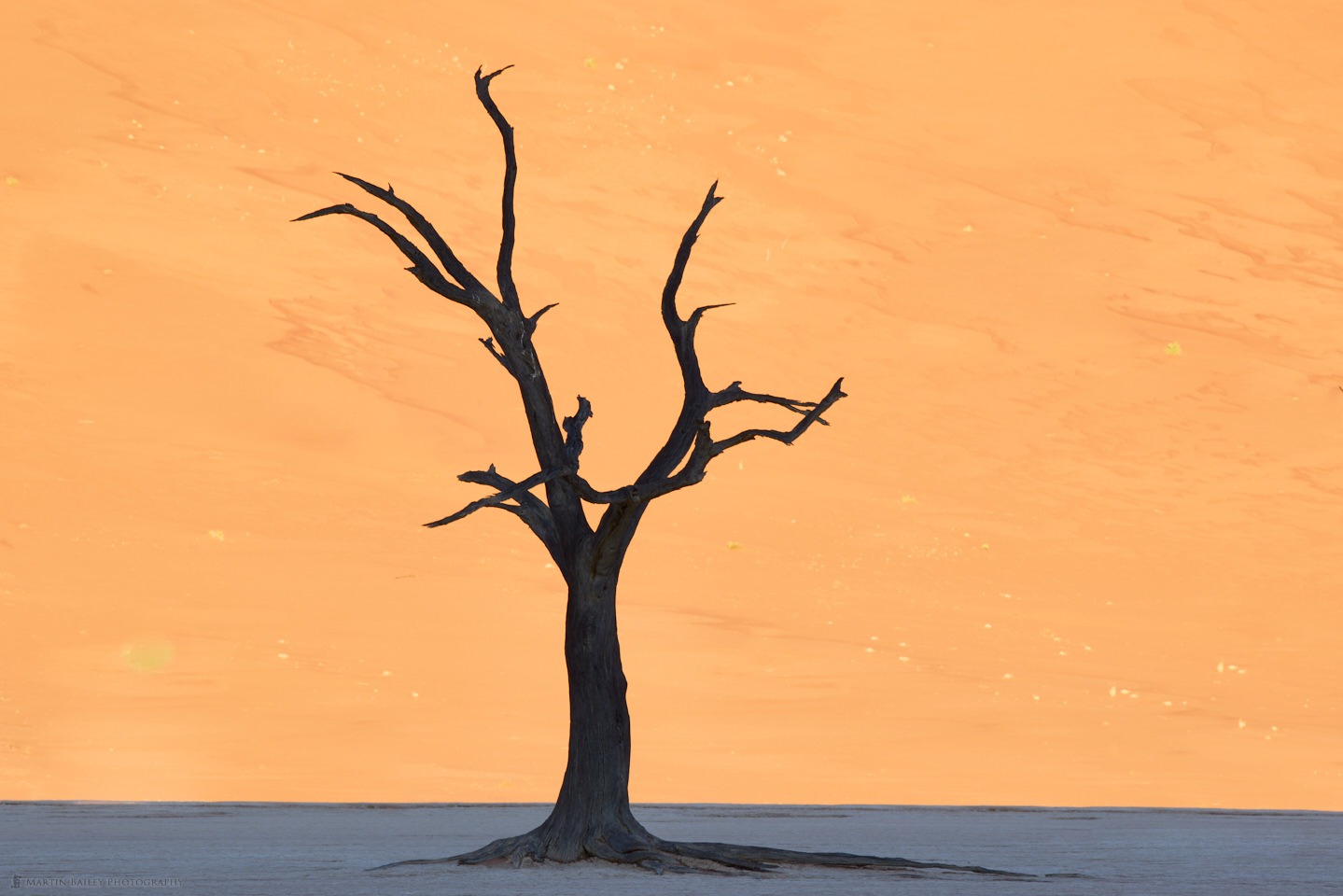
At the end of the second day in Sossusvlei, we made our way to a different dune for one last shot before we were scheduled to leave for our next destination. I like to fill the frame with the dune like this, as it makes the image a little more challenging to understand, and I like to work to understand an image sometimes.

This dune now has a second large dune to its right, so showing the entire dune no longer gives us that huge triangle look like the one from the previous day. Both make great iPhone panoramas too, but we have reached our limit of ten photographs for this episode.
So, a quick one today, but we’ll wrap it up there. If you are considering joining me on a future Namibia tour, my 2024 trip may be my last visit, so please get your ducks in a row, and visit my tours page for details.
Show Notes
See our tours page for details of future tours: https://mbp.ac/tours
Subscribe in iTunes to get Podcasts delivered automatically to your computer.
Download this Podcast as an MP3 with Chapters.
Visit this page for help on how to view the images in MP3 files.


0 Comments